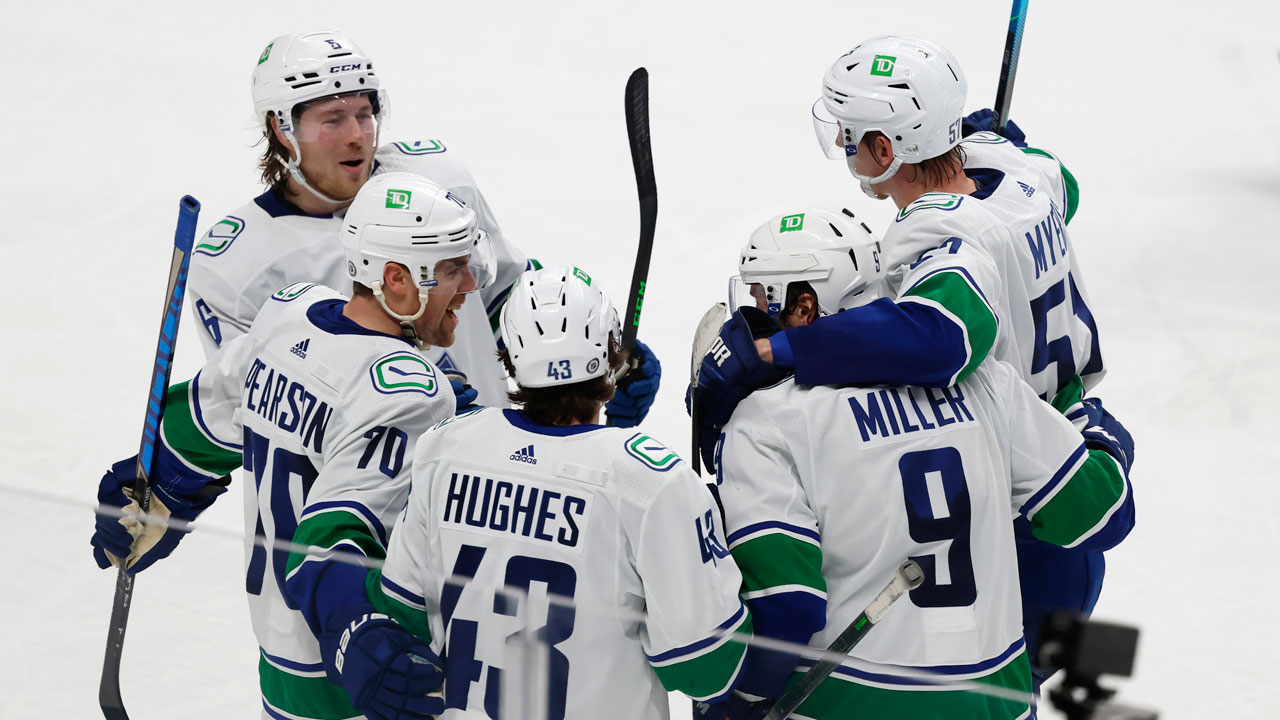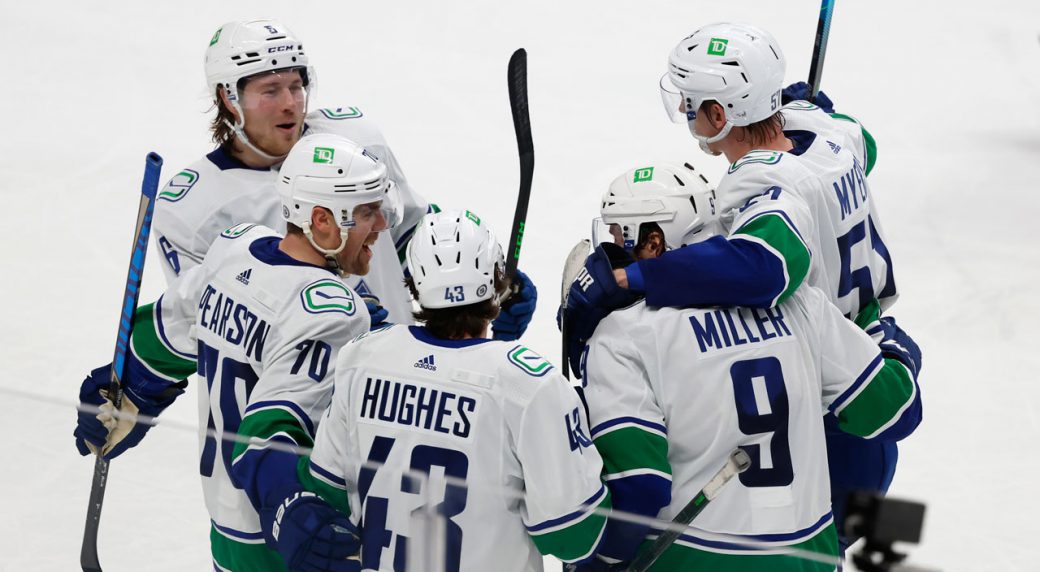

VANCOUVER – One week into the Vancouver Canucks’ COVID outbreak last April, many players were actually getting sicker, new positives were still trickling in and at least one member of the organization was going to need medical intervention.
One week into the current outbreak, defenceman Luke Schenn, Patient Zero this time around, returned to practice on Monday after what he described as a few days of symptoms typical of a regular wintertime cold or flu.
And yes, we said, practice.
With much of the NHL shutting down, the Canucks, after two days without any more players testing positive for COVID-19 and joining the six already in protocol, practised Monday at Rogers Arena with 17 skaters and both goalies.
Another practice was planned for Tuesday as (relatively) new coach Bruce Boudreau gets time to refine changes he initiated after replacing Travis Green on Dec. 5. The team is 6-0 under Boudreau.
The Canucks have had four games postponed so far, and no one knows if their schedule will actually resume as planned on Dec. 27 with a visit by the Seattle Kraken.
But they are profoundly better off this season, with players fully-vaccinated and apparently facing the Omicron variant, than they were eight months ago when they were decimated by the Gamma or P.1 variant before vaccines were available to players in Canada.
It’s still a deadly pandemic for the unvaccinated and immuno-compromised, but the Canucks, like nearly all of the NHL’s 800 players, don’t fit those categories.
“I feel like everyone’s probably looking at it. . . differently just because there’s more information available,” Schenn told reporters on Zoom. “When it first happened, there was no information at all, no studies. No one kind of knew how to treat it (and) there was no vaccines available and no one knew how severe it was and… how severe it could be depending on different sorts of underlying health conditions or age or different things like.
“A lot of science and research has gone on pause for other things and just totally focused on COVID the past year and a half, two years. There’s a lot of smart people out there and, like I said, you are able to look at it somewhat differently.”
For the record, Schenn did not contract the coronavirus last season despite the early wave that swept through his team, the Tampa Bay Lightning, and the defenceman confirmed it was Omicron that put him into COVID protocol after a positive test result on Dec. 12.
Vancouver defencemen Tucker Poolman, Brad Hunt and Tyler Myers remained in protocol on Monday, along with forwards Juho Lammikko and Tyler Motte.
But other players, who asked not to practise last week when consulted by Boudreau and new president Jim Rutherford, wanted to get back on the ice on Monday, Boudreau said.
“The unfortunate thing is that these guys have all gone through this (last season) and knew what the results were and they didn’t want that again,” Boudreau explained Monday. “They were being really cautious and probably a little bit afraid. And I don’t blame them at all. I mean, nobody wishes the situation that happened to the Canucks last year and the players that went through it, nobody wants that again. So when they said they didn’t think it was prudent or smart to practice, we didn’t do it.”
Boudreau said he phoned team captain Bo Horvat on Sunday to get his opinion and approval on a return to the ice after weekend games against the Toronto Maple Leafs and Arizona Coyotes were scrubbed.
On Saturday, Rutherford told reporters that he had spoken with all six players on his COVID list.
This direct communication during crisis between management and players was largely absent under previous GM Jim Benning, who preferred to communicate through the players’ agents. The lack of direct conversation last April left players feeling unheard when the NHL and its Players’ Association initially imposed a revised schedule that Canucks forward J.T. Miller publicly described as “dangerous” and “crazy.”
“We were learning a lot about it last year, but this year has been a lot different,” Horvat told reporters on Monday. “We know how fast it can spread and what it can do, so obviously we’re taking a lot more precaution this year, just from past experience. There has been a little bit more communication because obviously, we don’t want to have that happen again.
“They listen to what we have to say and are willing to change things or do things, you know, to help us not only off the ice but on the ice as well. And I think that’s a good thing to have communication between everybody and not having a disconnect. It’s been working well and we have to keep that going and keep communicating that way.”
Boudreau views the Canucks’ ability to practise, while a large swath of the NHL has been shuttered through the Christmas break, as a tactical advantage as he tries to install some changes to the way the team plays.
But nothing is as big as the difference in impact on players, so far, of COVID this winter versus COVID last spring.
“You look around the league and it’s going through teams like wildfire,” Horvat said. “Thankfully, the vaccine is making guys not get as sick we were last year unvaccinated. But at the same time, we don’t want this to keep spreading and get guys sick. Hopefully, everybody’s feeling OK and we can recover from this and get going again.”
That, too, would be a profound difference from last season.
With Canucks’ COVID battle not as severe, Boudreau looking to instill changes
Source: Pinas Ko Mahal

0 Mga Komento